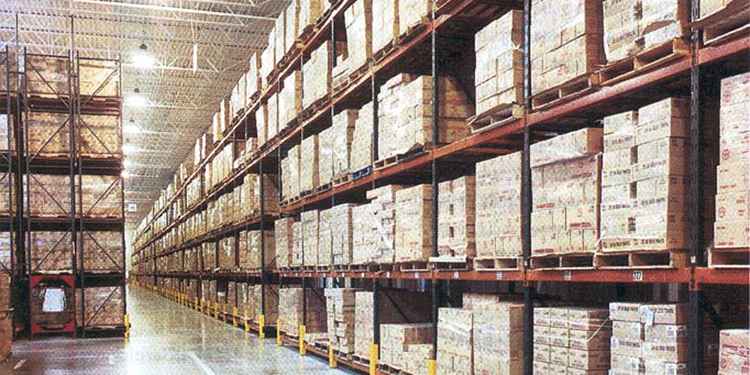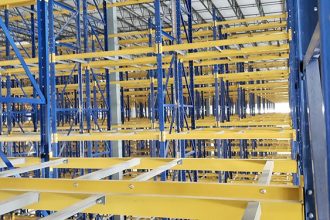The Six Different Rack Safety Inspections Needed During A System’s Lifetime

To ensure the safety and performance of a rack system, a series of six separate inspections is conducted throughout the system’s lifetime. An MHI Cast podcast recording about rack safety discusses the different types of inspections. It features the late Dan Clapp, former Chairman of both the Rack Manufacturers Institute’s (RMI) Engineering Committee and Specification Advisory Committee.
Under Clapp’s leadership, RMI continuously updated the American National Standard ANSI MH16.1 – Design, Testing, and Utilization of Industrial Storage Racks. It also created ANSI MH16.3 – Design, Testing, and Utilization of Industrial Steel Cantilevered Storage Racks. Both specifications detail the requirements for owners to maintain the integrity of their rack systems through these inspections.
In the recording, Clapp explains six different inspections that ensure rack safety. They include:
1. At the Point of Manufacture
The International Building Code (IBC) Section 1704.2.5 requires the rack manufacturer to have the fabrication of structural, load-bearing, or lateral load-bearing members or assemblies inspected at their facility. These rack safety inspections include an individual, special inspection of the actual project. Or, they can consist of an overall inspection and review of established, pre-approved quality control protocols in place at the shop.
2. Upon Delivery at the Installation Site
The rack installer should inspect the components delivered to the distribution center or warehouse. This inspection verifies that all beams, columns, connectors, and other members are present and undamaged to ensure rack safety. It includes cross-referencing the actual delivered components with the bill of lading and any other manufacturer documentation. It confirms all parts match the system specifications and have been received.
3. During Installation
As the industrial steel storage rack system is installed, it should be continuously inspected. This inspection checks that all components are being positioned and secured in accordance with the manufacturer’s recommendations and design. The inspection also verifies rack safety by confirming that the components are installed to match the planned configuration. Because racks are manufactured to be adjustable, it’s important to be certain that the system is used as intended by the design to provide the required capacity. Installers should avoid altering the system, since modifications could affect load ratings.
4. Post-Installation
A final, post-installation rack safety inspection assesses the entire configuration. It verifies that the beams are mounted at the proper elevation. Further areas for inspection include ensuring that columns are properly and securely anchored to the floor and are straight and plumb, as required in the ANSI MH16.1 and MH16.3 standards.
5. Periodic Inspections Post-Commissioning
Once the system is in use, periodic rack inspections should occur. Although the standards do not specify the frequency of rack safety inspections, industry best practices range from monthly to annually.
Determining how often to inspect racking depends on use considerations, frequency of inventory turnover, vehicle traffic, load weight, etc. As a general rule of thumb, the higher those factors are, the more often rack safety inspections should occur. For example, in a facility with a high degree of turnover, the more likely the rack is to be damaged—and, therefore, the more often inspections should occur.
At a bare minimum, the entire rack system should be inspected at least once per year. Certain areas, such as the ends of the rows of rack and the pass throughs are typically at the highest risk of damage. Inspect these areas monthly. Any observed damage should be reported immediately. For the safety of all personnel, promptly isolate and unload the damaged portion of the rack until repairs or replacement occur.
6. After Damage Repair or Replacement
Finally, after replacement or repair of any damage—either with original components or a rack repair kit—another rack safety inspection should occur. The RMI document, “Guideline for the Assessment and Repair or Replacement of Damaged Rack,” provides guidance on how to repair rack systems to return them to their original configuration. It also details how to properly inspect the repair. Key to this process is engaging a qualified professional rack engineer to evaluate the system before, during, and after the repair.
Looking for more information about RMI’s rack safety initiatives? Listen to the full MHI Cast podcast recording about rack safety.


